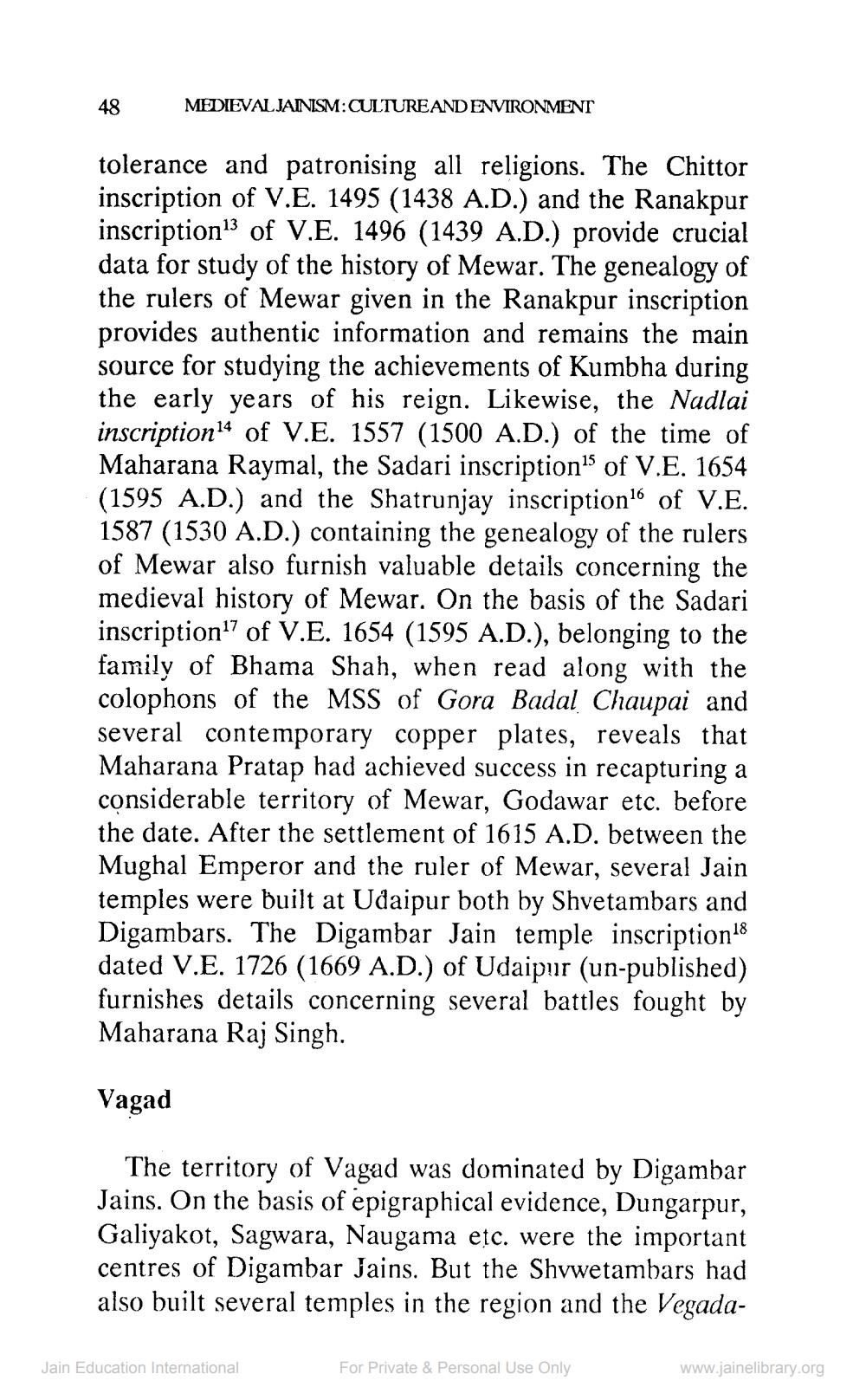________________
48
MEDIEVALJANISM:CULTUREAND ENVIRONMENT
tolerance and patronising all religions. The Chittor inscription of V.E. 1495 (1438 A.D.) and the Ranakpur inscription"3 of V.E. 1496 (1439 A.D.) provide crucial data for study of the history of Mewar. The genealogy of the rulers of Mewar given in the Ranakpur inscription provides authentic information and remains the main source for studying the achievements of Kumbha during the early years of his reign. Likewise, the Nadlai inscription14 of V.E. 1557 (1500 A.D.) of the time of Maharana Raymal, the Sadari inscriptions of V.E. 1654 (1595 A.D.) and the Shatrunjay inscriptionló of V.E. 1587 (1530 A.D.) containing the genealogy of the rulers of Mewar also furnish valuable details concerning the medieval history of Mewar. On the basis of the Sadari inscription of V.E. 1654 (1595 A.D.), belonging to the family of Bhama Shah, when read along with the colophons of the MSS of Gora Badal Chaupai and several contemporary copper plates, reveals that Maharana Pratap had achieved success in recapturing a considerable territory of Mewar, Godawar etc. before the date. After the settlement of 1615 A.D. between the Mughal Emperor and the ruler of Mewar, several Jain temples were built at Udaipur both by Shvetambars and Digambars. The Digambar Jain temple inscription18 dated V.E. 1726 (1669 A.D.) of Udaipur (un-published) furnishes details concerning several battles fought by Maharana Raj Singh.
Vagad
The territory of Vagad was dominated by Digambar Jains. On the basis of epigraphical evidence, Dungarpur, Galiyakot, Sagwara, Naugama etc. were the important centres of Digambar Jains. But the Shvwetambars had also built several temples in the region and the Vegada
Jain Education International
For Private & Personal Use Only
www.jainelibrary.org




